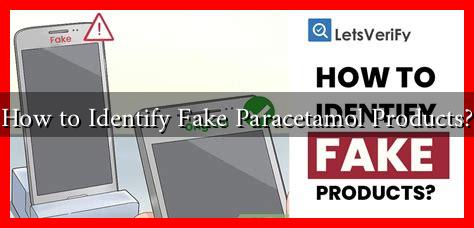-
Table of Contents
How to Identify Fake Paracetamol Products?
Paracetamol, also known as acetaminophen, is one of the most widely used over-the-counter medications for pain relief and fever reduction. However, the prevalence of counterfeit medications, including fake paracetamol, poses significant health risks. Identifying fake paracetamol products is crucial for ensuring safety and efficacy. This article will guide you through the key indicators of counterfeit paracetamol and provide practical tips for consumers.
The Growing Problem of Counterfeit Medications
The World Health Organization (WHO) estimates that up to 10% of medicines in low- and middle-income countries are counterfeit. In some regions, this figure can be as high as 30%. Counterfeit medications can contain incorrect dosages, harmful substances, or no active ingredients at all, leading to treatment failures and adverse health effects.
Key Indicators of Fake Paracetamol Products
Identifying counterfeit paracetamol can be challenging, but there are several key indicators to look for:
- Poor Packaging Quality: Authentic paracetamol products are packaged with high-quality materials. Look for signs of poor printing, misspellings, or inconsistent logos.
- Unusual Pricing: If the price seems too good to be true, it probably is. Compare prices with reputable pharmacies to gauge the average cost.
- Missing Information: Genuine products will have clear labeling, including dosage instructions, expiration dates, and manufacturer details. If this information is missing or unclear, be cautious.
- Suspicious Distribution Channels: Purchase medications only from licensed pharmacies or trusted online retailers. Avoid buying from street vendors or unverified websites.
- Inconsistent Appearance: Check the color, shape, and size of the tablets. Counterfeit products may differ from the authentic ones in appearance.
Case Studies and Real-World Examples
Several cases highlight the dangers of counterfeit paracetamol. In 2012, a study published in the journal BMJ Open found that 30% of paracetamol samples in certain regions of Southeast Asia were counterfeit. Patients who consumed these fake products reported severe side effects, including liver damage due to incorrect dosages.
Another notable case occurred in 2018 when a large shipment of counterfeit paracetamol was intercepted in Nigeria. The fake products were found to contain toxic substances, posing a significant health risk to consumers. This incident underscores the importance of vigilance when purchasing medications.
Practical Tips for Consumers
To protect yourself from counterfeit paracetamol, consider the following tips:
- Research the Brand: Familiarize yourself with the packaging and branding of reputable paracetamol products. This knowledge can help you spot fakes more easily.
- Check for Security Features: Some manufacturers include security features like holograms or QR codes on their packaging. Verify these features before purchasing.
- Consult Healthcare Professionals: If you have doubts about a product, consult a pharmacist or healthcare provider for advice.
- Report Suspicious Products: If you suspect you have purchased counterfeit medication, report it to local health authorities or the manufacturer.
Conclusion
Identifying fake paracetamol products is essential for safeguarding your health. By being vigilant and informed, you can reduce the risk of encountering counterfeit medications. Always purchase from reputable sources, check for key indicators of authenticity, and consult healthcare professionals when in doubt. Remember, your health is worth the extra effort to ensure that the medications you take are safe and effective.
For more information on counterfeit medications and how to protect yourself, visit the World Health Organization website.


